Operation Copenhagen
Compiled Reports from the Climate Change Conference
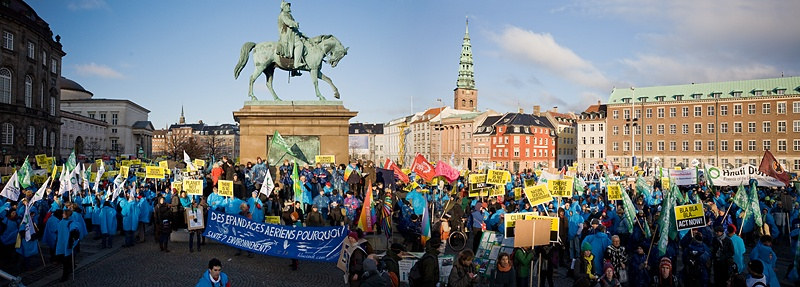
As you read this, the world is watching Copenhagen. Top-level leaders from nearly 200 countries, tens of thousands of activists, and untold numbers of eco-oriented non-governmental organizations (NGOs)-including more than a few folks from the Santa Barbara area-have descended upon the Danish capital as the United Nations Framework Convention on Climate Change (UNFCCC) nears completion.
With the Kyoto Protocol-the United Nations’ current, somewhat toothless climate change fighting treaty-set to expire in 2012, the Copenhagen gathering is considered by many to be the world’s last best chance to make definitive moves away from the planet-damning path we currently are on.
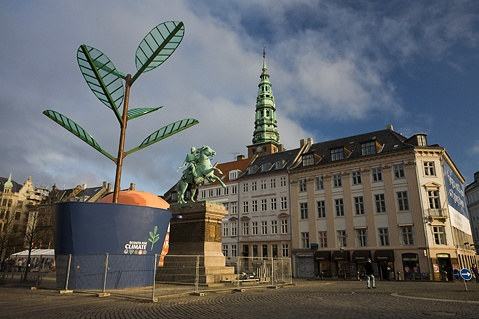
Drama is high. On Monday, convention delegates from developing countries including Africa, India, and Brazil temporarily stormed out of the negotiations, outraged about the process’s failure to address their concerns about what climate change means for them. Others, like some in the United States and Europe, are actively speaking out against the authenticity of the science behind the call for climate change reform. To them, the notion of a global climate in flux due to human behavior is little more than a load of agenda-driven crap.
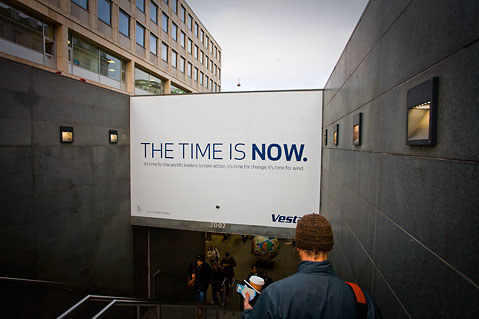
Then there are the protesters. As I write this, police sirens ring out in the cold night air; Molotov cocktail-throwing protesters clash with authorities in the name of eco-justice, their message a simple yet radical demand of system change instead of just climate change.
Past the halfway point in the two-week convention, it is impossible to say what, if anything, Copenhagen will accomplish, but one thing is certain: Now, more than ever before, the health of our planet is in the hearts and minds of the many and varied people who call it home.
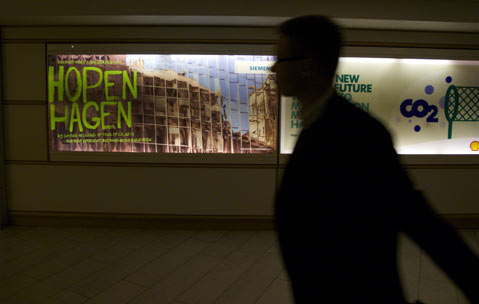
Climate Convention Breakdown
What does it mean when people say “climate change convention”? In reality, the gathering in Copenhagen of the UNFCCC actually is two concurrently running, acronym-loaded “processes,” with most players pulling duty in both efforts. The first, and more commonly known, process, the COP15 (Conference of the Parties), essentially is comprised of delegates from the United Nations’ Supreme Party (roughly 200 countries). The COP meets every year and talks climate change shop. The second process is known as the CMP (Parties to the Kyoto Protocol); folks from the COP get together once again, only this time they are convening specifically as a meeting of signers of the Kyoto Protocol.
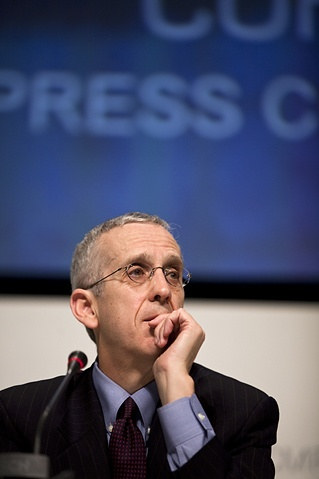
Within these two processes-and this is where stuff gets complicated-there are various subgroups. Each of these subgroups are tasked with working toward compromise on big-ticket items such as negotiating legally binding climate reduction commitments beyond the 2012 expiration of the Kyoto Protocol, or figuring out an entirely new international climate deal. It is within these subgroups that most of the action happens.
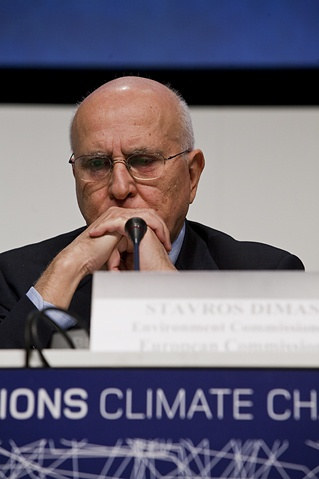
Throughout this bureaucratic dance, you have the divergent interests of big polluting countries, such as the U.S. and China, going head-to-head with the concerns of smaller, less-developed countries that find themselves on the front lines of climate changing effects, like the Pacific Island nation of Kiribati or African countries. This year’s convention is of such importance not only because of the soon-to-expire Kyoto Protocol, but also the ever-increasing international consensus that climate change is real, quickly accelerating, and potentially deadly.
The other major players in the climate convention are the NGOs, which make up what amounts to a science fair on steroids in the conference center building. On some occasions, certain NGOs are allowed to sit in on the subgroup negotiations to help make the magic happen.
During the last three days of the convention, high-profile leaders from all the countries involved join the circus and the final push for compromise is made. As of press time, that’s exactly what’s happening.
The following is Operation Copenhagen’s day-by-day account of the convention.
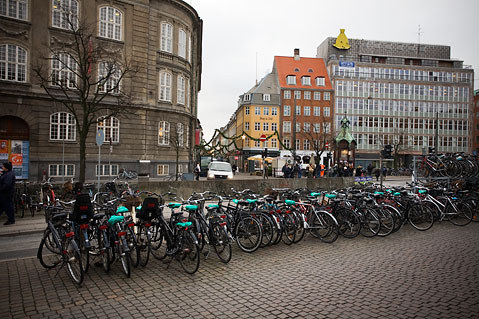
Thursday, December 10
After more than 20 hours of travel via planes, trains, and automobiles, Operation Copenhagen has arrived in its namesake destination. We have taken up residence across town from the Bella Center, the convention’s headquarters, in the N,rrebro neighborhood. At first light tomorrow, we will hop on the 5A bus and head into the heart of the convention, but for now, we sleep.
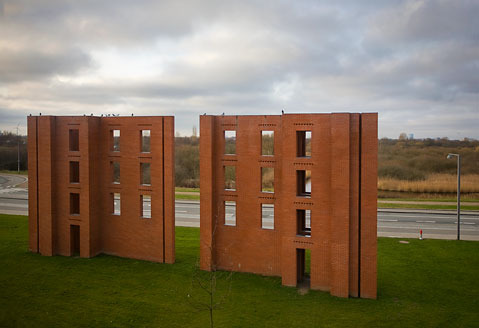
Friday, December 11
Holy crap, this ain’t no Santa Barbara County Board of Supervisors meeting. The UNFCCC is in a league all its own-an absolute action-packed and information-loaded three-ring bureaucratic circus. With a staggering crush of media folks (some 35,000 are reported to be in attendance), untold numbers of NGO representatives, scores of official conference observers, and hundreds of diplomats, scientists, and politicians, this is an impressive gathering that many are calling “the most important environmental moment of our lives.” Or, as COP15 Executive Secretary Yvo de Boer put it this afternoon, “This is about the future of people.”
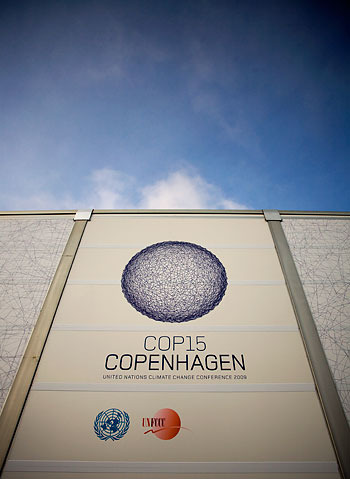
Unlike its simple, block-like exterior, inside, the Bella Center is a buzzing, casino-esque labyrinth of exhibition booths and breakout rooms that hum all day with presentations (covering such topics as climate change’s impact on biodiversity in South America’s rain forests to how a successful climate treaty could increase the gross national happiness of Bhutan), closed-session negotiations, and nonstop press briefings.
We spend much of our morning getting acquainted with the layout of the convention before sitting in on an emotionally charged presentation from Australia’s Climate Action Network about grim climate change-induced realities, while being stared down by the residents of Kiribati and other small Pacific island nations.
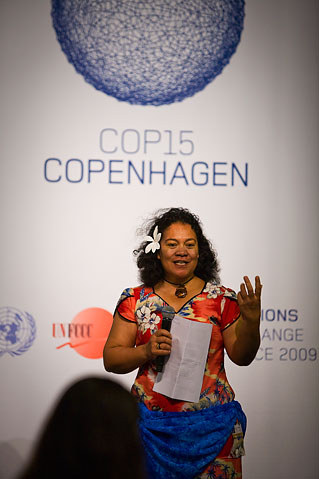
While many in the United States debate whether or not climate change is a reality, the folks from tropical-paradise atolls like Kiribati and Tarawa, as well as the Torres Strait Islands, don’t have time for such luxury-they are too busy coming to terms with the certain death of their culture if things continue on their current climate course. The increase in global temperatures and the resulting sea level rise from melting ice caps has basic things like food, shelter, and drinking water very much on the ropes in their low-lying islands (Kiribati, for example, is, at most, only three meters above sea level).
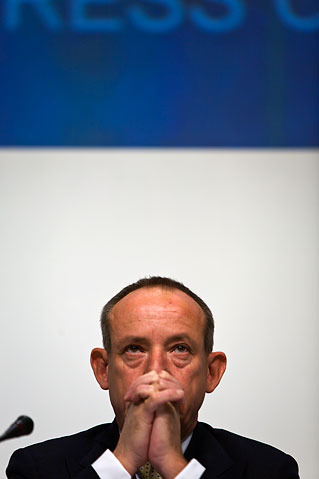
Next, we attend Executive Secretary Yvo de Boer’s daily afternoon briefing. The first week of the convention nearly complete, de Boer optimistically reported, “Serious work has begun on the core elements that will constitute the agreement that will emerge at the end of this meeting.” With the main negotiation sessions betwixt countries closed to the media, the large international crowd of journalists on hand had to take his word for it.
Perhaps the biggest news from today was a pledge from the European Union to pony up some 7.2 billion euros to help finance the immediate implementation of a climate treaty. While de Boer speculated that a legitimate deal would take more than three times that amount for implementation alone during the first three years, the promise of funding from such a big player is indeed promising for the process, especially at this early stage. “Now, we just have to wait and see what other rich countries offer,” explained de Boer.
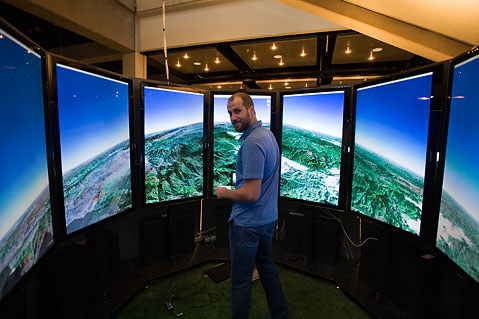
Saturday, December 12
Something wild happened on the way to the Bella Center today. While things were relatively quiet at the COP15, it was anything but in the streets of Copenhagen. Tens of thousands of protesters from around the world gathered in front of Denmark’s Parliament building throughout the morning, letting convention delegates know just how disappointed they are with the current track of the negotiations. Several hours and a few police standoffs later, most of them had made the five-mile walk to the convention, save for the 900 or so who were arrested along the way.
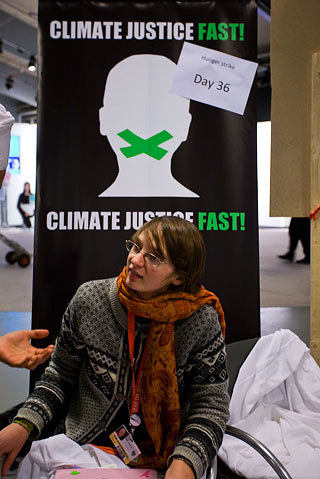
Operation Copenhagen was on the scene bright and early, making it to the square in front of the Parliament building before most of the crowd arrived. Soon, a “flood” of some 3,000 people wearing blue ponchos swarmed the square in front of Parliament. (The location has a great deal of historical relevance as it’s the place where, in June 1849, mobs of disillusioned working-class Danish people assembled to call out King Frederick VII and demand a piece of the leadership pie.) The blue-clad protesters were part of Friends of the Earth International, and they were there to demand climate justice and, more specifically, to call bullshit on the notion of carbon offsetting-a popular method explored by the COP15 that allows major polluting countries like the U.S. to achieve target reduction goals by paying for carbon credits from smaller, less polluting, and often less financially endowed countries.
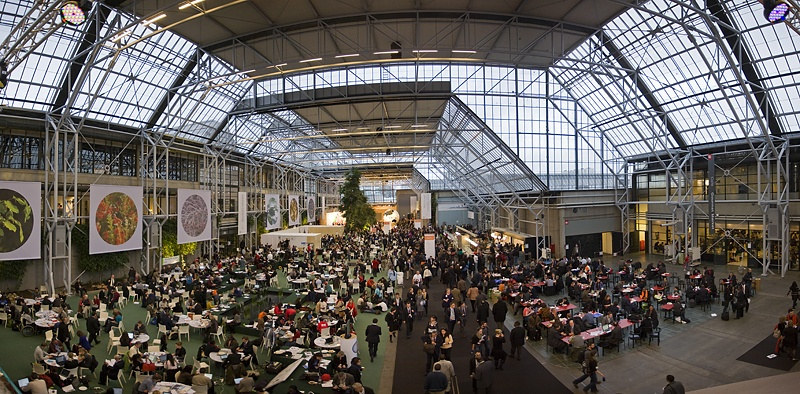
While activist actors manned a Global Offsetting Station and shouted sarcastic quips in thick Eastern European accents into microphones (such as, “Who needs climate justice? We are capitalists,” and, “Do you have carbon emissions problem? No worries. Just buy your permit here. It’s okay, it’s magic, your emissions will disappear”), the blue ponchos stormed the square and a celebration began.
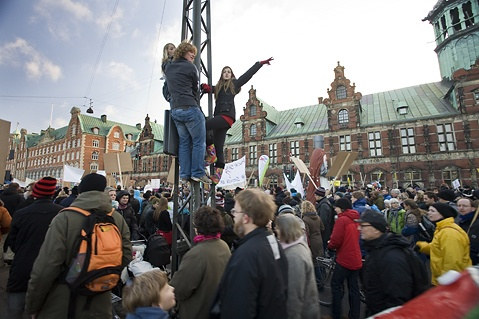
After a short speech from Friends of the Earth International leadership, the protest turned into a feel-good dance party of sorts with whistles blowing, drums banging, and flags waving. And while it may have looked like a party to the many police officers looking on, it really was just the slow progress of a massive march. As the morning wore on, people kept arriving to the square, and while the umbrella purpose was climate action, the divergent interests showing up to have their voices heard was impressive.
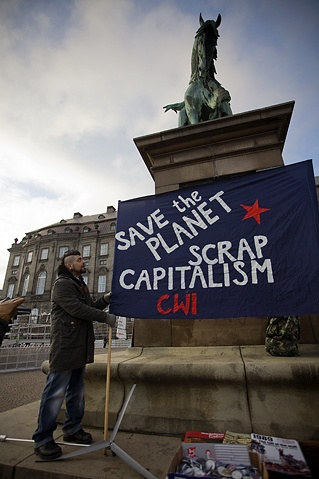
From communist groups and Greenpeace to radical vegetarians and a pro-Iranian crew, it seemed there wasn’t any activist subgroup without representation in the march. There was a team of flaming panda bears, a huge melting snowman, Tibetan monks, thousands of well-meaning regular folks, and the hardcore, punk-rock looking, often mullet- or Mohawk-haired “kids in black” who carry anarchy in their backpacks and wear a serious look of dissent on their face 24/7. Surveying the crowd, I promised myself I would have an escape route planned at all times for the rest of this convention, no matter where I was.
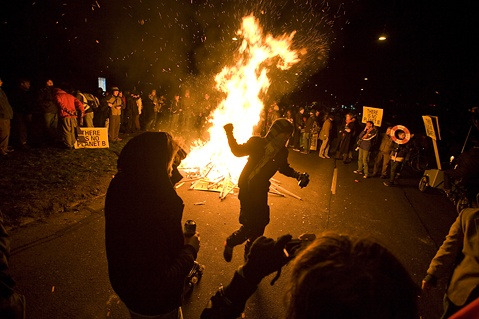
After many miles of marching, the masses gathered outside the Bella Center and started building fires in the street. In the end, authorities reported that most of the 900 people detained were released before charges were ever filed. A spokesperson for the police explained that these well-intentioned people were handcuffed and thrown in blacked-out paddy wagons as a “precaution.”
As we wearily made our way home after more than 13 hours in the trenches, fireworks began exploding in the skies above our neighborhood, several miles from the protest area.
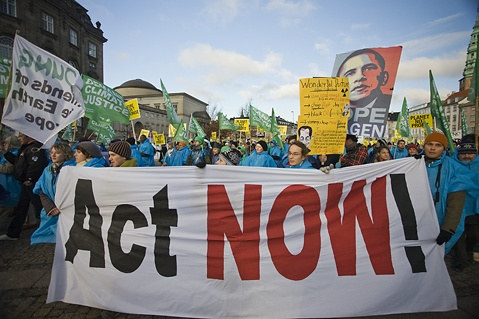
Monday, December 14
The final week of the COP15 kicked off today with disappointment for some official delegates and observers alike. With already impressive crowds, a second wave of planned attendees arriving this week for the final push toward a climate deal, and security concerns about a possible terrorist strike or more radical protester dissent, convention organizers were forced to withdraw thousands of previously issued passes to the Bella Center. The end result was that many folks from NGOs, including observer groups like the crew of 20 students from UCSB’s Environmental Affairs Board, were left on the outside looking in. “The UCSB group is going to have quite a hassle getting in,” said Gaucho Jess White. “We’re trying to remain optimistic, but things are looking grim.”
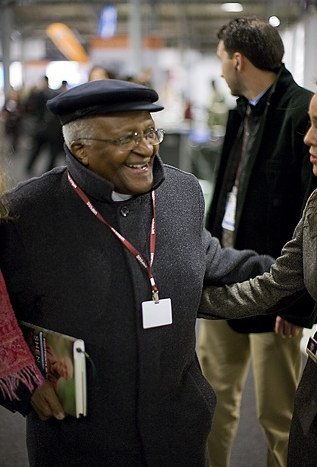
Luckily, the increased lockdown of the Bella Center did not apply to the media masses, and, after a few more shakedowns by the police than we had encountered previously, we were once again inside the biggest planet-loving science fair the world has ever seen. It also was the scene of perhaps the biggest drama to date, at least on the negotiations front. In a dramatic turn of events, delegates from several developing and newly industrialized countries-including a handful of African nations, Brazil, India, and China-walked out in disgust in the middle of the talks.
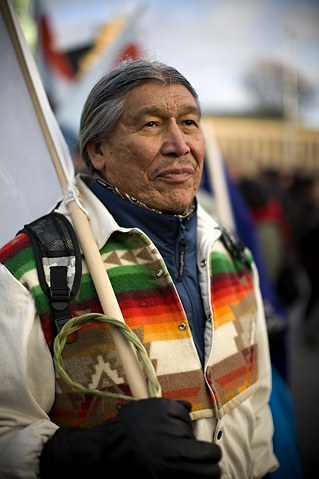
For them, the current direction of the negotiations was too much about the needs and wants of industrial countries and too little about what developing nations require, specifically money-wise, in order to make widespread carbon emissions cuts feasible. Moreover, the frustrated nations feel that bigger, industrial countries are responsible for the majority of the carbon mess, and thus believe they should have to make bigger cuts and pay more toward the cleanup. Furthermore, the less industrialized countries are unwilling to hamstring their own economic growth. The irony that high-polluting yet still very much developing nations like China and India were involved in the walkout was not lost on most in the Bella Center, though it seems that such irony is the calling card of this incredibly complicated and confused process.
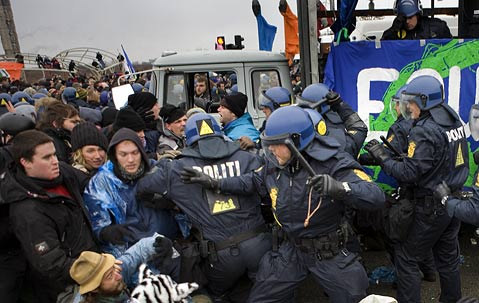
Quick action by Executive Secretary de Boer helped remedy the row, and the nations returned within a few hours. By the end of the day, industrialized countries like the United States, Italy, Britain, and Norway had pledged a total of $350 million during the next five years to help lesser-developed nations make the necessary pro-planet moves. Though not an ideal financial kick-down, the pledge was, at the very least, a sign of movement in the right direction.
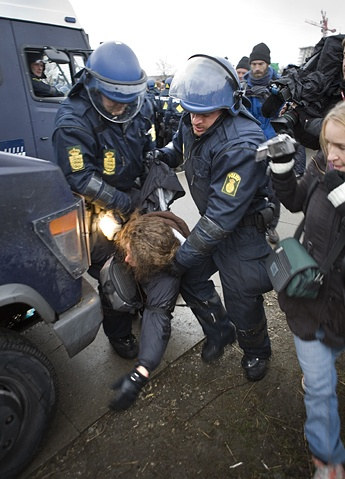
As for the access issues being dealt with by the thousands of denied attendees, it seems there is little that can be done. The numbers are grim, according to convention authorities: some 46,000 have received accreditation, yet the fire code has the Bella Center maxing out at 15,000 people at any one time. Numbers aren’t really our thing here at Operation Copenhagen, but even we know that formula equals long lines and certain disappoint for thousands of hopeful participants.
Besides walkouts and lockouts, the other major news today was the breakout of some late-night riots in the Christiania area of Copenhagen. Though details remain sketchy, there are reports of Molotov cocktails, burning police barricades, approximately 200 arrested protesters, and general chaos in the streets.
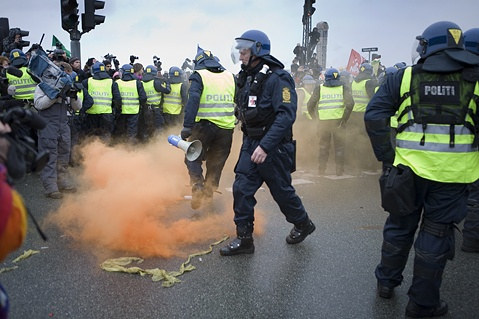
Tuesday, December 15
As the final phase gets underway today, it seems that if you are holding your breath waiting for a definitive climate change agreement, you better plan to pass out. With more than 130 heads of state arriving, chief negotiators for industrialized nations put on a happy face today, expressing optimism that a deal is still possible. But in the trenches, the feeling is decidedly different. That is to say, the fourth quarter just started, Planet Earth is down a couple touchdowns, and the other team has the ball. Or, as the COP15’s de Boer put it this afternoon, “There is still an enormous amount of work to be done if this conference is to deliver what the people around the world want it to.”
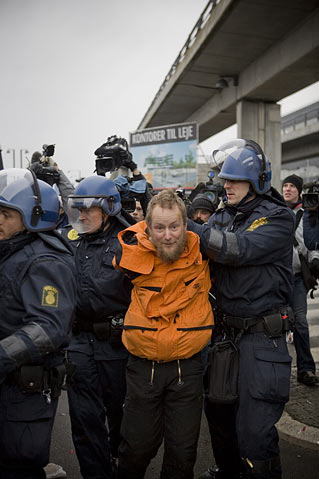
The omens were bad from the beginning. Lines snaked for as far as the eye could see, fences had been erected where previous freedom was enjoyed, and tensions among conference-goers were running high. Pushing, shoving, and swearing in several languages were not uncommon. Many never made it inside, including Rick Ridgeway, the vice president of Ventura-based clothing company Patagonia, who was invited officially by the U.S. government to present Patagonia’s new Freedom to Roam initiative, which aims to create vital wildlife corridors for critters big and small. Yesterday, he waited in line for seven hours but never made it in. Today, he waited for nearly five more hours, arriving to his presentation fewer than 30 minutes before it began. He was lucky. Many of the UCSB contingent-also “official” guests-have yet to crack the nut of the Bella Center.
Once inside, we saw a moving presentation by former president of Ireland Mary Robinson, who explained the various ways in which human rights must inform long-term visions for climate change reduction. A cornerstone of Robinson’s presentation was a recently released study from the UC Berkeley School of Law co-authored by Santa Barbara native Caitrin McKiernan.
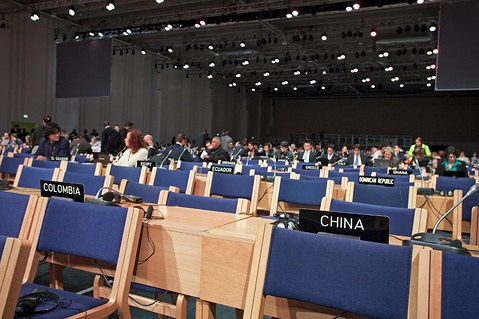
That’s where Tuesday’s positivity ended. Sitting through numerous press briefings with lead delegates from the European Union, African nations, the United States, China, India, and the COP15 itself, it was clear that differences between parties still vastly outnumber agreements. Summing it up, Conference President Connie Hedegaard explained, “It is 193 parties that have to want to do the same thing at the same time. : This is a UN conference and everyone has to agree on everything, and if they don’t, it gets stopped. That is just the reality here.” But Hedegaard was adamant that a deal was still very much alive if two things could happen. “We must have the United States on board,” she explained, “and we must somehow reflect the Chinese, India’s, and Brazil’s action.”
The latter is most complicated. For global carbon reduction to happen, industrialization must be curbed within a nation, which is a great conflict of interest for countries that are still developing. Insult is added to injury when the United States-one of the biggest emitters and biggest economies-is unwilling to sacrifice as much as the little guys. The flip of this is China, simultaneously a massive polluter and a developing country, which is unwilling to box itself into a corner that would negatively impact its economy. It’s a nasty standoff, causing other nations to pick sides and conference facilitators to employ some serious mediation tactics to break stalemates. With the COP15 set to conclude in roughly 48 hours, this is not the state of affairs people had hoped for.
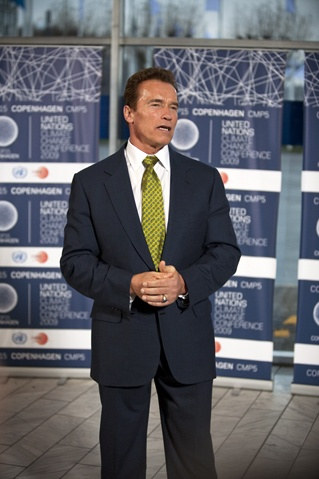
Also of note today, California Governor Arnold Schwarzenegger showed up, and, much to the delight of folks able to attend his standing-room-only presentation on the roles state- and city-level governments can play in ushering in climate change policy, he concluded his talk with an “I’ll be back” sound bite.
Tomorrow morning, the masses are rumored to be mobilizing at train stations throughout the city before making their way to the Bella Center in a coordinated effort to storm the convention. With more than 100,000 activists feeling properly disillusioned, nearly 70 percent of Denmark’s police force on call, and world leaders slated to start their official national statements at the Bella Center at high noon, the recipe seems ripe for mayhem. Even Conference President Hedegaard admitted today, “I believe that citizens out there might sense a discrepancy between their concerns and calls for action and what they hear coming out of the conference. : And I certainly understand that.”
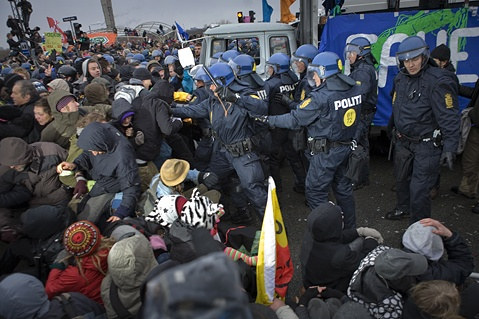
Wednesday, December 16
Though smaller than Saturday’s march, this morning’s Push for Climate Change protest took a turn for the radical outside the Bella Center shortly before noon today. With designs on making it past conference security fences, an international swarm of activists several-thousand-people strong gathered in the lightly falling snow, waving flags, banging drums, and chanting in unison, “Reclaim power!” and “Climate justice now!” Urged by a countdown from a speaker-loaded truck, the crowd surged and police surged back. Sirens blasted, helicopters whirled overheard, and the unmistakable scent of tear gas choked the late-morning air. One woman was hauled away by her throat, her hands zip-tied behind her back and her voice urgently pleading with the three riot gear-clad men dragging her across the cold pavement: “We are here in peace. We have a right to be here.”
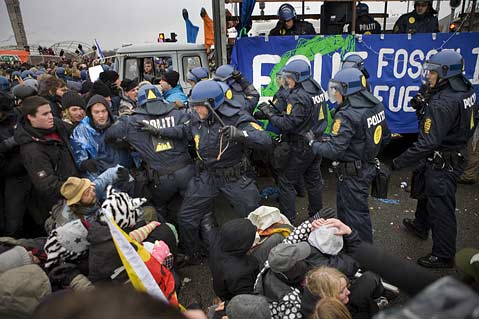
In the end, more than 200 people were arrested as police used batons, tear gas, pepper spray, water cannons, and a steady procession of armored vans to force the crowds away from the Bella Center’s entryway. As violent as it was, it could have been much worse as officers showing restraint greatly outnumbered those bludgeoning men and women alike with batons in their efforts to disperse the crowds.

With fewer than 48 hours remaining, negotiations can’t afford to be distracted by the mayhem outside-though today’s resignation of Hedegaard as conference president assures that there’s no shortage of turmoil inside either. Presidents from more than 70 nations have already arrived, with 60 more slated to show up, and one very important one, President Barack Obama, scheduled to attend the final hours of negotiations on Friday morning. Every one of them is well-aware, much like the men and women rallying outside, that it is now or never for the COP15 and-depending on whom you talk to-the world as well.



